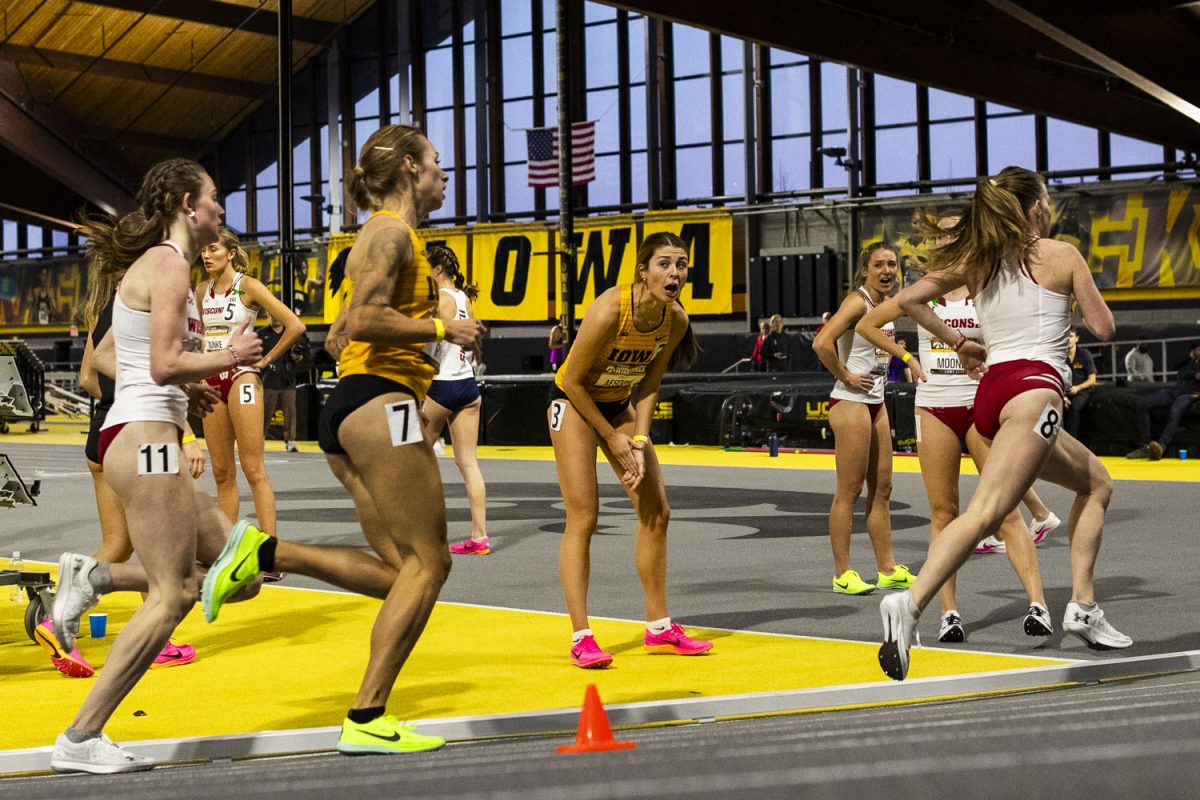It’s well-documented how the extra foot added to the 3-point line has affected the men’s game — bringing down the national average for made 3-pointers to its lowest since the 1998-99 season at 34.23 percent, according to statsheet.com — but are there any effects on the women’s game as a result?
The easy answer would be no, because the women’s line has stayed in its original place, 19 feet, 9 inches from the basket. However, research by the Daily Iowan suggests the opposite — the women’s 3-point percentage has decreased at almost the same rate as the men’s 3-point percentage.
The 2007-08 season saw the highest 3-point percentage in the men’s game, 35.02 percent, since the national adoption of the line before the 1986-87 season. In the BCS conferences of women’s basketball — the ACC, Big 12, Big East, Big Ten, Pac-10, and SEC — the 3-point percentage has dropped more than 0.6 from last year. The percentage as of Feb. 18 in the major six conferences is 31.94, compared with last year’s 32.58.
“It’s hard, because I never really look down at the line,” said Iowa senior Kristi Smith, who is shooting 42.9 percent from beyond the arc. “If I catch it, I’m open and in range, I’m going to shoot it.”
In an attempt to curb any decrease in 3-point shooting percentage, Iowa head coach Lisa Bluder addressed the problem at the beginning of the season by spending time in practice stepping on the men’s line.
“I was so tired of our women spotting up from behind the men’s 3-point line,” Bluder said. “I actually just made them come out and jump on top of the men’s 3 line so they got used to stepping on that line.
“It’s human nature to not step on the line.”
Despite the initial drill at the beginning of the season, senior Wendy Ausdemore, who is shooting 37.3 percent from downtown, admitted needing constant reminders during practice.
“Coach [Bluder] calls us out in practice all the time and she says, ‘Make it easier on yourself. You’re way behind the men’s line,’ ” Ausdemore said. “But as a player, I guess I don’t really notice when I do it except for if my shots are consistently short. Then, I can look down and tell that I’ve been behind the line.”
Ausdemore estimated that she gets told at least once a practice by Bluder that she is well beyond the men’s line. Despite the reminders, she has endured her lowest 3-point percentage since her freshman year — In 2007-08 she held the third-highest 3-point percentage in the NCAA at 45.6 percent, and in 2006-07 she finished in 14th, connecting on 41.6 percent of her 3-point attempts.
Only the two coastal conferences, the ACC and the Pac-10, have increased their 3-point percentages thus far in comparison with the 2007-08 campaign. Iowa’s Smith, whose 42.9 3-point percentage ranks 20th in the NCAA, has also increased her percentage from last year’s 34.6 percent, and she has reason to believe the new men’s line might actually be beneficial.
“Coach [Bluder] had us stomp on the men’s line because she wanted us to toe up to the women’s line,” Smith said. “It’s always in the back of my mind that I have to toe up and get that much closer.”
Another issue to be taken into account when considering the decrease in 3-point percentage is the varying colors of 3-point lines. In Carver-Hawkeye Arena, the women’s line is black, and the men’s line is white. In contrast, Duke, which Iowa played at Cameron Indoor Stadium on Dec. 4, has a white women’s line and a blue men’s line — Iowa’s shot 27.78 percent from 3-point range in Durham, N.C.; its season average is 36.1 percent.
“What makes it also difficult is in our arena our line is the black line and the men’s line is the white line. But you could go to a different arena, and it could be reversed,” Bluder said. “I think it probably needs to be more uniform at least with the outside line being this color and the inside line one being darker and one being lighter. That could be maybe a national change that would help that situation.”






